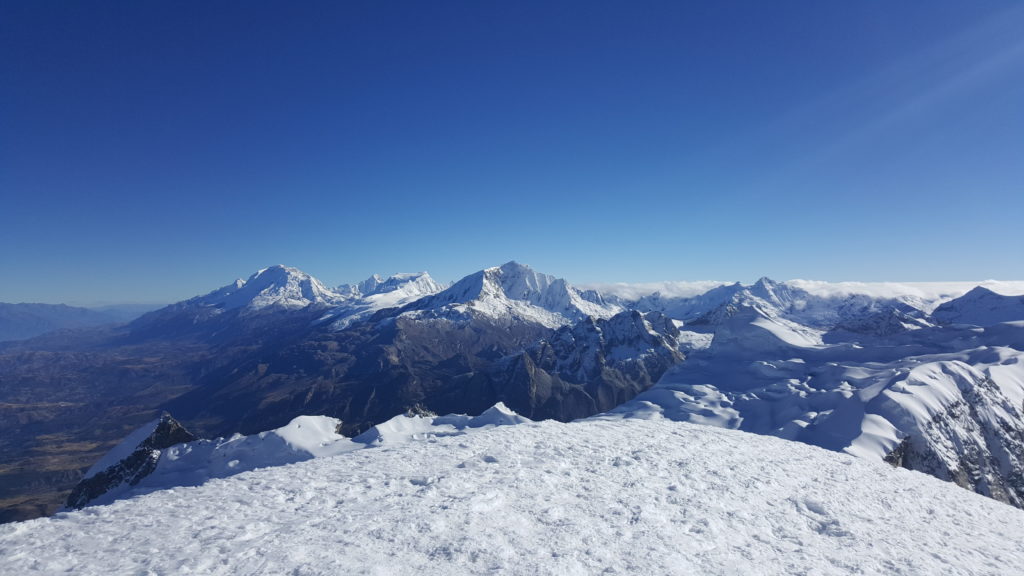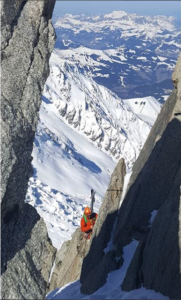IFMGA Certification with Ray Hughes


We had a chance to go climbing with guide Ray Hughes in Red Rocks this week. Ray is preparing for his final AMGA rock guide exam and trying not to get burnt to a crisp in the desert heat.
If you haven’t had a chance to see Red Rocks for yourself, let us tell you, the climbing is SWEET! The red sandstone cliffs offer plenty of moderate multipitch routes and some tough sport climbing as well.
Now, onto the interview.
Q: Ray, can you give us a rundown of what you’re up to? Can you fill in how this AMGA Rock Guide Exam fits into your IFMGA certification?
Ray: I’ve been traveling for the last couple months rock climbing in some of my favorite areas in the Western US to prepare for my last exam to become a Certified IFMGA / American Mountain Guide. I’ve been to Smith Rock, OR, Lovers Leap in S. Lake Tahoe, CA, and Eldorado Canyon, Rocky Mountain National Park, Rifle, and Shelf Road in CO. The last two weeks have I’ve been climbing in Red Rock National Conservancy, about 15 Miles west of the Las Vegas strip. I am currently a certified Ski Mountaineering and Alpine guide. This exam, rock, will complete the formal evaluation by the American Mountain Guides Association, making me an IFMGA guide with a certification that is recognized at the highest level worldwide.
Q: How many years does it take to become a certified Rock Guide? An IFMGA guide?
Ray: To become a certified Rock Guide is a three-part process consisting of 26 days of training and examination by the AMGA. Some guides complete the process in as fast as 2 years, though I believe most guides completing the Rock Guide track are certified within 3-4 years. Courses include the rock guide course, the advanced course with a 3-day aspirant exam component, and the exam, all taken at least a year apart. Part of the process that’s easy to overlook is the time it takes to complete the prerequisites in order to be accepted to the Rock Guide Course.
To become an IFMGA / American Mountain Guide, we have to complete similar courses and exams in the Alpine and Ski Mountaineering disciplines as well as Rock, plus Wilderness First Responder and the highest level of Avalanche Certification. This process could take as little as 3 years if all pre-requisites are in place, but many guides spread training and exams out over 5-10 years. Just like guiding, there is no one way.
Q: What is involved in getting your certification?
Ray: In the most basic terms, a mountain guide has to be accomplished at all forms of mountain travel. In order to gain experience and the prerequisites necessary to continue through the AMGA evaluation process, I’ve traveled all over the world for
bigger
more complex terrain. By doing so, I was able to complete the ski and alpine disciplines in 2 years along with the highest level of avalanche education. Should I pass the rock exam next week, I will have completed the guide examination process in just over 3 years. I was very selective in the work I accepted and made sure I had time to travel and train in places like Switzerland, France, Italy, Iceland, Peru, and Canada. The only advice I have for anyone wanting to pursue this certification is to know what you want from it. Make this certification work for you.
Q: What makes you want to be a mountain guide?
Ray: My friends kept getting married, having kids, and stopped skiing and climbing. By becoming a mountain guide, I always have partners. Just kidding, sort of.
To be recognized worldwide as one of the best in my profession is very important to me. By becoming a mountain guide the world opens just a little more. The number of opportunities for certified mountain guides are endless and at the end of the day I want to be part of planning and mitigating risk for someone’s best trip ever.

Q: What’s one of the coolest places that mountain guiding has taken you?
Ray: This past Summer I had the opportunity to guide in the Peruvian Andes. It was my first expedition style climbing trip as a guide and honestly, I didn’t think this type of climbing was something I had any interest in. I’ve been able to travel all over the world to ski and climb as a guide and on personal trips. I fell in love with Peru. The people, the food, the culture, and the big mountains. The relaxed pace was such a welcomed change from amped-up GoPro charged climbing and skiing I’ve been involved in over the last few years. I enjoyed the expedition style so much, I will be going back to South America in January to guide Aconcagua.
Q: What’s the hardest part of the job?
Ray: People pay me to mitigate risk. One of the hardest parts of the job has been making the decision to turn around or not even go up. For whatever reason, weather, avalanche conditions, or an individuals fitness. My goal every day is to get everyone home.
Q: What’s the best thing to eat in the mountains AND what’s the first thing you eat when you get out of the mountains?
Ray: The best thing to eat in the mountains is anything Alfredo serves while we are in Peru! I love having real food in the mountains. Sliced fruit, vegetables, cheese, salami, fresh bread, rice, chocolate, coffee, etc. Tasty Bites are pretty good as well. I’ve hauled pre-scrabbled eggs with peppers and tortillas. During a yurt trip in the Tetons, I prepped Pad Thai with Tempeh. I try to avoid dehydrated meals whenever possible!
The first thing I usually want when I get out of the mountains is a Pepsi. As for food, I guess that all depends on where I am, but my favorite has always been pizza. 
Q: What kind of guiding do you do from day-to-day?
Ray: My year flows in blocks during the seasons. I have to plan at a minimum of six months in advanced.
During the winter I teach avalanche courses and ski guide a couple days a week. In the spring I’ll usually have a week or two of ski touring in the Alps. In the Summer, I mostly work in the alpine. Now that I’ve taken on expedition guiding, I can be away for a week to a month at any time during the year.
I think it’s important to keep in mind how physical and mentally demanding mountain guiding is. it’s important to take time off to rehab or heal overuse injuries and rebuild for the next block of work. No matter the time of year, I am always training for the “big project.”
Thanks Ray, good luck with your exam!